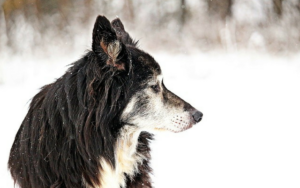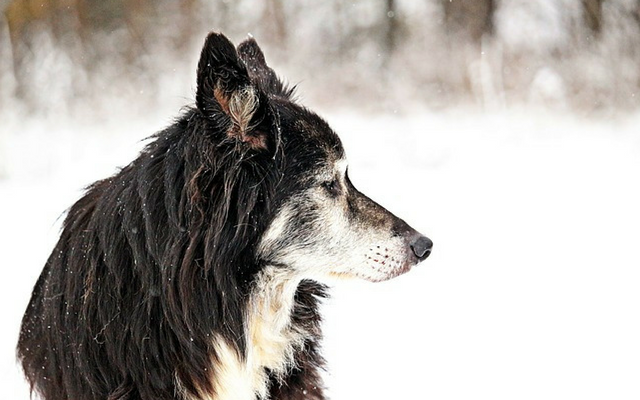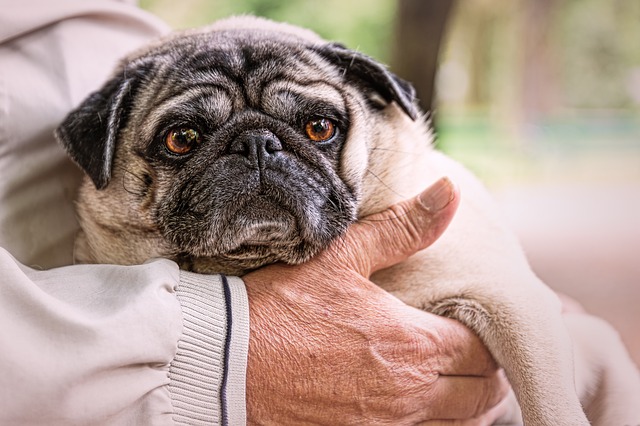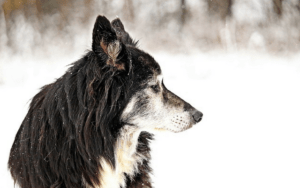 Signs your canine might be prepared to pass
Signs your canine might be prepared to pass
When the time pertains to bid farewell, all canine moms and dads hope their family pets in harmony die after a long, delighted life. The regrettable truth, nevertheless, is senior pet dogs and pet dogs experiencing disease or injury usually depend on their owners to understand when it’’ s time to cross the Rainbow Bridge. Selecting to end a life—– a life you’’ ve valued as part of the household—– is an impossibly tough choice, however avoiding suffering is your greatest issue.

No one desires their friend to suffer, and vets guide pet dog owners in how to inform when disease or sophisticated age has actually ended up being excessive for a family pet to bear. There is no clear response to when it’’ s time to bid farewell, however there are indications to try to find to assist make this essential choice. Having a couple of the following signs doesn’’ t’always suggest it ’ s your pet dog ’ s time, however observing numerous of these indications shows it may be time to talk with your veterinarian about a tranquil end of life strategy.
.1. Anorexia nervosa.
For the majority of pet dogs, consuming is their preferred thing to do. They enthusiastically munch down supper and accept every reward used and left vulnerable. When a pet unexpectedly or slowly stops revealing an interest in meal time, it’’ s an indication something isn ’ t. As organs closed down, the canine loses their experience of cravings and thirst. Consuming is unexpectedly more effort than it’’ s worth, and even the juiciest steak can’’ t lure them into chewing. Health will continue to decrease without a healthy diet plan. Short-lived fasting might be triggered by something as benign as a stomach pains, however if meals go unblemished for a number of days in a row, it’’ s time to talk to a vet.
.2. Severe Weight Loss.
Gradual weight reduction isn’’ t simple to area. A lot of canines step on a scale when a year at their yearly veterinarian check-up. If their owner isn’’ t selecting them up on a routine basis, progressive weight reduction can quickly go undetected. It doesn’’ t occur simultaneously, however one day a pet owner may observe their pooch looking particularly thin. It might be connected to an absence of hunger or their body’’ s failure to procedure nutrients.

.3. Persistent Pain.
A pet can’’ t inform you when they wear ’ t feel well, which makes acknowledging the indications of persistent discomfort specifically difficult. The secret is to pay very close attention to the pet dog’’ s body movement, motions, and habits. Often discomfort can be handled with medication or routine physical treatment, and in some cases it can’’ t. Pain management methods that utilized to operate in the past can stop working. If your pet dog doesn’’ t appear to liven up after taking medication, or if their routine physical treatment regular no longer appears beneficial, their discomfort is adversely—– and more than likely completely—– impacting lifestyle.
.4. Loss of Interest.
Veterinarian and VetStreet factor Dr. Andy Roark recommends pet owners determine lifestyle by making a list of their animal’’ s 5 preferred things to do. The list might consist of playing bring, consuming, or welcoming their owner each time they come through the door. It’’ s essential to make your list based upon what your pet liked doing when you understood they were pleased and healthy. Dr. Roark states ,
““ When she or he can no longer do 3 or more of [the products on the list], lifestyle has actually been affected to a level where lots of vets would advise euthanasia.””
.  5. State of mind Changes.
5. State of mind Changes.
Along with loss of interest, ailing pet dogs may likewise reveal indications of state of mind modifications. Caring canines understood for being great around kids may slowly grow cautious of the very same habits they utilized to endure. Discomfort and a basic poor quality of life can trigger them to be even aggressive and short-fused. They may begin reacting to circumstances in unforeseen methods and start acting in a different way around member of the family. They might likewise reveal indications of anxiety consisting of sleeping regularly and being normally non-active.
.6. Social Withdrawal.When their time is coming and pick to withdraw from the household, #ppppp> Many aging pets can pick up. Some canine behaviorists think pets separate themselves at the time of their death as an impulse to not decrease the pack or trigger unneeded injury for enjoyed ones. Not everybody supports this theory, however social withdrawal frequently occurs at the end of a pet dog’’ s life. They look for seclusion to prevent contact, in some cases due to the fact that being touched is too uncomfortable to bear. They conceal in closed-off locations and invest more time on their own than with household.
.7. Incontinence.
Incontinence is the failure to manage the muscles in the bladder or bowels resulting in the uncontrolled loss of urine or feces. It’’ s a condition that impacts senior pet dogs of all types. Pets WebMD lists urinary system infections, hormone imbalances, degenerative spine conditions, diabetes, and kidney illness as possible causes. Consistent leaking of urine or feces makes a mess, and it likewise aggravates the skin. Senior pet dogs that begin having regular mishaps inside might be experiencing incontinence and be too weak to make it outside. Not every case of incontinence is connected to an animal’’ s end of life, however it ’ s crucial to talk to a vet.
.

.8. Breathing Problems.
As the body closes down, breathing ends up being harder. End of life breathing issues might manifest as a persistent cough or the pet dog’’ s failure to take a deep breath. Their breathing may sound irregular or there might be annoyingly long stops briefly in between each exhale and breathe in. Labored breathing drains pipes a canine’’ s energy and normally causes routine sleepiness.
.9. Loss of Coordination.
A basic decrease in coordination and cognitive dysfunction prevails in senior pet dogs. A pet near their time may appear unstable and specifically awkward on their feet. They typically offer the look of being lightheaded and may stroll into furnishings and have difficulty obtaining from location to location. In many cases, the pet dog may select to stay inactive due to the fact that they understand standing will cause loss of limb control and disorientation.
.10. Problem Standing.
If coordination issues aren’’ t what ’ s keeping a canine from moving, it might be discomfort and muscle weak point. Muscles slowly degrade due to sophisticated age and bad nutrition. A pet dog that utilized to be able to jump over the fence may begin having problem strolling and even standing. This failure to walk around can be both dismaying and discouraging to the pet dog. Some attempt their hardest to get up just to collapse due to weak point.
Watching your canine’’ s health decrease is the most unpleasant part of being an animal owner. Above whatever else, you put on’’ t desire them to suffer. Making an end of life choice for your pet dog won’’ t be’simple, however it ’ s crucial to put your pet dog ’ s requires above your own feelings. Think about the circumstance objectively and speak to as lots of people as you can. Talk about with pals who made comparable choices and talk it over with other grownups in the household. Your vet will offer you their suggestion, however the choice is entirely yours to make. Palliative care can assist reduce your pet’’ s suffering and keep them comfy as you think about choices.
( h/t: Vetstreet , Pets WebMD ) googletag.cmd.push( function() deployads.push( function() ); );
The post 10 Signs Your Dog May Be Ready To Cross The Rainbow Bridge appeared initially on iHeartDogs.com .
Read more: iheartdogs.com






Recent Comments